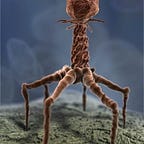Thoughts on the American Society for Virology 2016 Meeting
Today concludes the 35th annual meeting of the American Society for Virology. For the first time, the conference was held at my home institution of Virginia Tech, in Blacksburg, VA. I hope everyone enjoyed their stay, and we all owe many thanks to the hundreds of people at Virginia Tech, the ASV, and our own labs who made this gathering possible.
This was my first opportunity to attend the conference; I couldn’t help but be impressed with the plenitude of quality research done by so many presenters. I’ll summarize some of the big talking points below.
Congrats to the Canadian Society for Virology!
Our friends to the north had their inaugural meeting this weekend, as the Canadian Society for Virology was officially established! Break out the champagne (or maple syrup)!
Zika Virus
When the organizers of the ASV conference were planning presentations, Zika virus was not even in the news. But researchers scrambled to put together sessions on the pathogen once it became a global health crisis.
The first Zika virus vaccine is now entering human trials. We have known about Zika for about sixty years, but nobody had given it much thought before the outbreak. That being said, the response from the research community has been remarkably quick. We have already gained a good understanding of its function, and multiple vaccines are on the way towards FDA Phase I trials. The work is promising, but we aren’t there yet; one important concern is that a vaccine may undergo recombination with other Flaviviruses in Central America, such as dengue fever.
Oncolytic Virotherapy
One of the trendy topics at the conference was oncolytic virotherapy. The keynote given by Dr. Stephen Russell highlighted progress in the fledgling field. The concept behind using viruses to treat cancer is intriguing, but there is still a long way to go before this becomes a common therapy. Viruses are like machines, capable of being assembled into a vector designed specifically to target cancer cells. An oncolytic virus works through two mechanisms: first, the virus infects and kills the targeted cancer cells. Then, the presence of the virus activates the host’s immune system. This immune response kills the cancerous cells that are uninfected. This dual mechanism of action provides hope for a “single-shot cure” to cancer which may be unattainable by conventional cancer treatment methods.
Oncolytic virotherapy is still a very young field, existing for only about the last 25 years. In 2015, the first oncolytic virus was approved for melanoma lesions of the skin and lymph nodes. Other oncolytic viruses have done poorly in clinical trials. We need to better understand how these viruses function and how to better engineer them. Perhaps most importantly, we need to further elucidate the mechanisms by which certain tumors are susceptible to these viruses. If we can better characterize the tumors, we can match them more effectively to a good virus.
For more on oncolytic virotherapy, listen to the most recent podcast from This Week in Virology, filmed in front of a packed ASV audience.
Viruses in the Microbiome
Sticking with the theme of viruses that are good for us, more attention is being drawn to the role of viruses in the human microbiome. It is now common knowledge that we share our body space with trillions of microbes, but many forget that viruses can play just as important a role as bacteria. It has been demonstrated in germ-free mice that the addition of viruses can benefit the host much like bacteria. Viruses interact both with human cells and with bacterial cells. They are a vital part of the symbiosis that keeps us healthy. Some viruses can even prime our immune systems to protect against later infection from a worse pathogen.
Vaccine Progress
Research progress continues to be made against viral infections such as HIV, Ebola, RSV, and Influenza. I was overwhelmed by the number of groups studying and developing vaccines for a breadth of pathogens. As we better understand how these viruses interact with their hosts, how their proteins function, and how they evolve to escape us, I have no doubt that we will see new and innovative therapies to combat some of mankind’s most diabolical enemies.
Virus Diversity and Evolution
We love and hate viruses for the same reason: they evolve so rapidly. This makes them particularly good at escaping whatever treatments they may develop; it also makes them the universe’s most fascinating puzzle. New techniques are being used to comprehend how viruses change over time. Deep sequencing shows precisely which areas in the viral genome tend to change quickly. Mapping viral evolution probably won’t enable us to predict it, but we can better match our labwork to what occurs in nature. There is a delicate balance between diversity and stability in viral genomes, and we can potentially target this fragility as a way to attack viruses. Understanding the plastic nature of viral genomes will also help us better build our own vaccines.
Viruses Everywhere
Viruses are all around us. Most of the widely known ones have a bad reputation. Some have been found to be beneficial. But it is clear that the vast majority of them are still completely unknown. We are only beginning to scratch the surface on the ones that live in our own body. Over 90% of ocean viruses are a complete enigma to us, and there are an estimated 10 million times more viruses in the oceans than there are stars in the universe. Archaeal viruses are some of the most fascinating scientific wonders of this world; their ability to survive in extreme conditions may help unravel the secrets of life itself.
“Love is like a virus. It can happen to anyone at any time.” — Maya Angelou
For more posts about disease and biology, subscribe to Cell Your Soul. Feel free to comment below or message your feedback!
